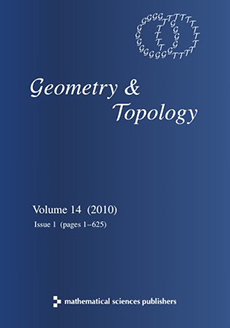Abstract
We relate two classical dualities in low-dimensional quantum field theory: Kramers–Wannier duality of the Ising and related lattice models in dimensions, with electromagnetic duality for finite gauge theories in dimensions. The relation is mediated by the notion of boundary field theory: Ising models are boundary theories for pure gauge theory in one dimension higher. Thus the Ising order/disorder operators are endpoints of Wilson/’t Hooft defects of gauge theory. Symmetry breaking on low-energy states reflects the multiplicity of topological boundary states. In the process we describe lattice theories as (extended) topological field theories with boundaries and domain walls. This allows us to generalize the duality to nonabelian groups; to finite, semisimple Hopf algebras; and, in a different direction, to finite homotopy theories in arbitrary dimension.
Citation
Daniel S Freed. Constantin Teleman. "Topological dualities in the Ising model." Geom. Topol. 26 (5) 1907 - 1984, 2022. https://doi.org/10.2140/gt.2022.26.1907
Information





